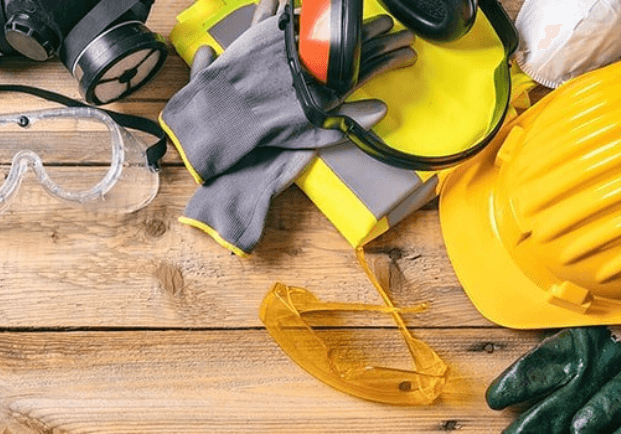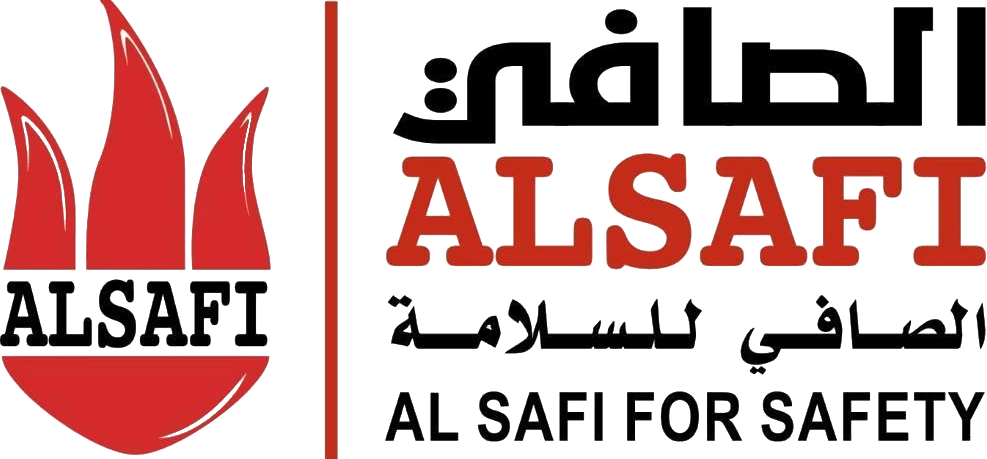Safety measures in buildings and public facilities

Safety measures in buildings and public facilities are essential elements for protecting lives and property. With the advancement of engineering standards and increasing risks related to electricity, fires, and natural disasters, it has become necessary to equip buildings with integrated prevention systems such as fire alarm devices, emergency exits, fire extinguishers, surveillance cameras, along with regular supervision and maintenance of these systems. Proper implementation of safety measures not only ensures compliance with regulations but also enhances trust and demonstrates the owner’s commitment to the safety of employees and visitors.
Fire Safety in Buildings
There are several measures that must be taken to ensure fire safety in buildings and to protect them from the resulting damage and risks. These measures include:
- Installing appropriate fire alarm devices throughout the building, including early fire detection devices such as heat detectors, smoke detectors, and audible and visual alarms.
- Providing suitable fire protection systems within the building, including chemical sprinklers, portable fire extinguishers, water sprinkler systems, gas suppression systems, and fire doors to prevent smoke and fire from spreading through safe escape routes.
- Emergency staircases must be strong and suitable, as they are one of the most important safety tools for safe evacuation in case of fire. These staircases should be made from fire-resistant materials and designed for easy and quick escape.
- Providing an emergency lighting system to ensure adequate lighting if power is cut due to fire, helping guide people safely and quickly.
- There should be proper ventilation in the building to allow fresh air circulation and reduce the accumulation of harmful gases and smoke in case of a fire.
Safety Requirements in Residential Buildings
There are several safety requirements that must be met in residential buildings to protect them from potential risks, including:
- Providing residential buildings with an adequate number of emergency exits.
- Prohibiting locks on emergency exit doors.
- Separating residential units from other building areas with fire-resistant walls of at least two hours.
- Equipping buildings with water sprinkler systems for fire suppression.
- Providing at least two escape routes accessible to all residents in the building.
- Separating apartments with walls resistant to fire for at least one hour if no sprinklers exist, or at least half an hour if sprinklers are present.
- If the number of residential units exceeds 25, emergency lighting and guidance signage must be provided throughout the building.
Safety and Security Procedures in Facilities
The following points outline the safety measures that should be implemented in buildings and public facilities:
- Buildings hosting gatherings should have a sufficient number of fire stairs.
- Separate residential units above gathering areas using fire-resistant barriers lasting two hours.
- Provide a main exit in halls that can accommodate more than half the expected number of people, with width exceeding that of all connected corridors.
- Side exits should accommodate at least one-third of hall visitors.
- Halls with balconies used by 10 or more people should have at least two escape routes.
- Halls located more than 9m below ground must be divided into two compartments to prevent smoke spread.
- All decorations and curtains should be non-combustible.
- Automatic alarm systems, extinguishing devices, and smoke detectors must be present in halls.
Safety Measures in Buildings and Public Facilities
1. Fire Protection Systems
- Fire Alarm Devices: Install fire alarms throughout the building to alert occupants in case of a fire.
- Sprinklers: Install automatic water sprinkler systems that extinguish fires immediately.
- Fire Extinguishers: Provide fire extinguishers in suitable locations and train staff to use them.
- Emergency Exits: Design clear, accessible emergency exits with illuminated signage.
2. Architectural and Structural Design
- Use Fire-Resistant Materials: Select non-flammable or fire-resistant building materials.
- Design for Easy Evacuation: Ensure buildings are designed for quick evacuation in emergencies.
- Ventilation and Natural Lighting: Provide proper ventilation and natural lighting to reduce suffocation risk and improve visibility.
3. Electrical Safety
- Safe Electrical Equipment: Use electrical equipment and wiring that meet standard specifications.
- Proper Grounding: Ensure effective grounding to prevent electric shocks.
- Automatic Circuit Breakers: Install breakers that cut power in case of faults.
4. First Aid and Healthcare
- Provide First Aid Kits: Place kits in appropriate locations.
- Train Staff in First Aid: Train staff to handle emergency injuries.
- Provide Medical Points: Have first aid or medical units ready for rapid response.
5. General Safety
- Security Monitoring Systems: Install surveillance cameras and anti-theft alarms as key home safety measures.
- Staff and Occupant Training: Organize training sessions for safety awareness and emergency procedures.
- Regular Maintenance: Perform routine maintenance of all safety systems to ensure proper functioning.
6. Regulatory and Legal Procedures
- Compliance with Laws and Regulations: Follow local and international safety regulations.
- Regular Inspections: Conduct inspections to ensure buildings meet safety standards.
Proper implementation of safety measures in buildings and public facilities helps reduce risks and protect lives and property.
Home Safety Tools
Ensuring home safety tools are available and functional, and educating family members on their use, can save lives and prevent major losses. Some essential home safety tools include:
- Smoke Detector: Emits a loud alarm when smoke is detected, alerting occupants quickly.
- Fire Extinguisher: Used to extinguish early-stage fires, preferably placed in the kitchen.
- Gas Leak Detector: Alerts to gas leaks before they become dangerous, especially in homes using gas for cooking.
- First Aid Kit: Contains basic tools for treating minor cuts or burns.
- Fire Blanket: Used to smother flames on clothing or oil fires.
- Flashlight and Spare Batteries: Useful during power outages or emergencies.
Importance of Home Safety Tools
Having safety tools at home is crucial for protecting family members from unexpected accidents such as fires, gas leaks, or minor injuries. These tools help manage emergencies quickly before they escalate, with key benefits including:
- Early warning in case of fire or gas leak.
- Helping extinguish fires before they spread.
- Protecting children and the elderly during emergencies.
- Reducing material losses from accidents.
- Increasing safety levels at home.
- Providing time to act quickly in emergencies.
- Peace of mind and reassurance.
You can contact us at Al-Safi Safety Systems for inquiries about essential home safety tools.
Frequently Asked Questions about Safety Measures in Buildings and Public Facilities
What are safety and security tools?
They are tools people can use to protect themselves from potential hazards, including fire detection devices, alarm systems, surveillance cameras, and gas detectors.
What are public safety measures?
These include fire alarms installed throughout buildings to alert occupants, water sprinklers that automatically extinguish fires, and fire extinguishers in appropriate locations, with staff trained in their use.
What are safety systems?
Safety systems are administrative and technical solutions designed to protect facilities from potential hazards. They include camera surveillance systems, fire detection devices, automated extinguishing systems, and access control systems. These systems reduce human and material losses by enabling early detection and rapid intervention.
What is general safety and prevention?
General safety and prevention is an important concept in all aspects of life—home, school, or any institution. It involves rules, procedures, and systems within a legislative framework to protect humans from injuries and preserve property from damage. Institutions are equipped with qualified staff and all necessary tools to ensure worker safety and protect equipment.
What are safety equipment and tools?
Safety equipment and tools are used by workers to protect themselves from harm and prevent accidents. This includes helmets, gloves, earplugs, safety goggles, breathing apparatus, and other safety gear.



